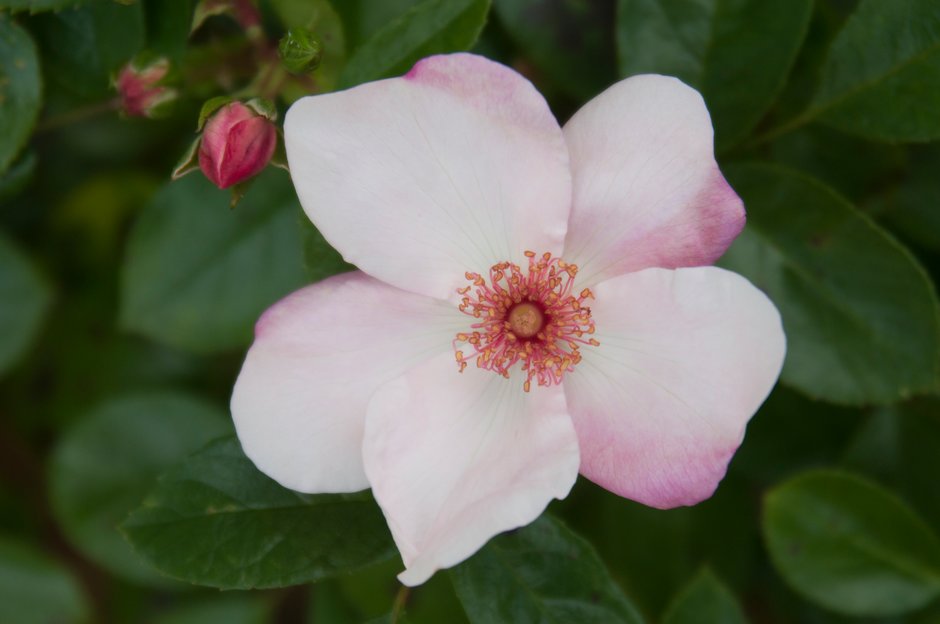Rosa The Charlatan ('Meiguimov'PBR) (S)
rose [The Charlatan]
A rose with arching stems that can be left to produce a spreading 1m high shrub, or trained as a 2m high pillar rose. The flowers, produced in summer and autumn, are large, single and pale pink with striking red filaments and golden anthers
Size
Ultimate height
1–1.5 metresTime to ultimate height
2–5 yearsUltimate spread
1.5–2.5 metresGrowing conditions
Moisture
Moist but well–drained, Well–drainedpH
Acid, Alkaline, NeutralColour & scent
| Stem | Flower | Foliage | Fruit | |
| Spring | Green | |||
|---|---|---|---|---|
| Summer | Pink | Green | ||
| Autumn | Pink | Green | ||
| Winter |
Position
- Full sun
Aspect
South–facing or West–facing or East–facing
Exposure
Exposed or Sheltered Hardiness
H6Botanical details
- Family
- Rosaceae
- Native to GB / Ireland
- No
- Foliage
- Deciduous
- Habit
- Bushy
- Potentially harmful
- Fruit are ornamental - not to be eaten. Wear gloves and other protective equipment when handling. Pets: Fruit are ornamental - not to be eaten - see the HTA guide to potentially harmful plants for further information and useful contact numbers
- Genus
Rosa can be deciduous or semi-evergreen shrubs or scrambling climbers, with usually thorny stems bearing compound pinnate leaves and solitary or clustered flowers. Flowers may be followed by showy red or purple fruits in some varieties.
- Name status
Trade
- Horticultural Group
- Shrub roses are large shrubs with usually thorny stems bearing large leaves and fragrant, single to double flowers in clusters in summer, and usually also in autumn
How to grow
Cultivation
Grows best in fertile, humus-rich, moist but well-drained soil in a sunny, open position. Mulch in late winter and, to improve flowering, apply a balanced fertiliser in late winter or early spring and again in early summer - see rose cultivation
Propagation
Propagate by semi-ripe cuttings in late summer or hardwood cuttings in autumn, or by chip budding in summer
Suggested planting locations and garden types
- Cottage and informal garden
- Wildlife gardens
- Climber and wall shrubs
- Flower borders and beds
- Wall side borders
Pruning
See pruning group 21 (shrub roses) or train as a short climber see pruning group 17 (climbing roses)
Pests
May be susceptible to aphids, including rose aphid, the most common rose pest. May also be susceptible to rose leafhopper, glasshouse red spider mite, scale insects, caterpillars, large rose sawfly, rose leaf-rolling sawfly and leaf-cutter bees. Deer and rabbits can also cause damage
Diseases
May be susceptible to rose black spot, rose rust, replant disease, rose dieback, and rose powdery mildews. May also be susceptible to disorders rose blindness and flower balling and sometimes honey fungus
Love gardening
Sign up to receive regular gardening tips, inspiration, offers and more
View our Privacy Policy
Get involved
The Royal Horticultural Society is the UK’s leading gardening charity. We aim to enrich everyone’s life through plants, and make the UK a greener and more beautiful place.
